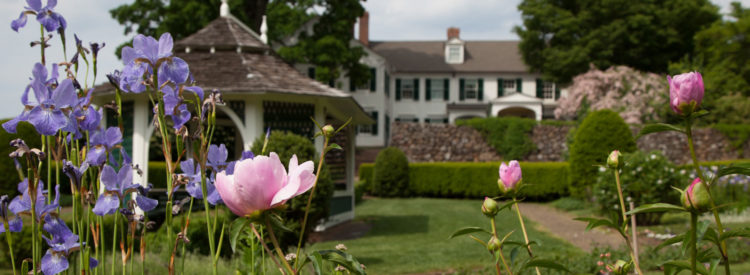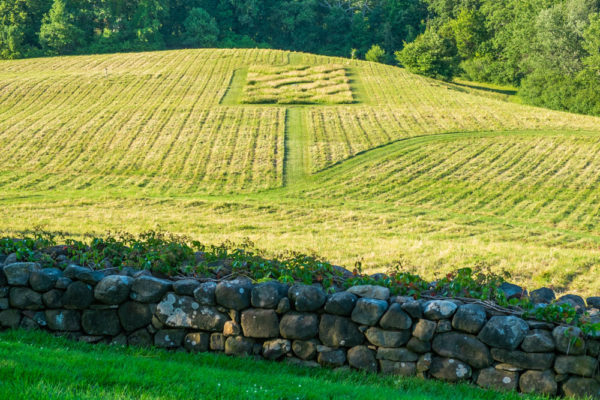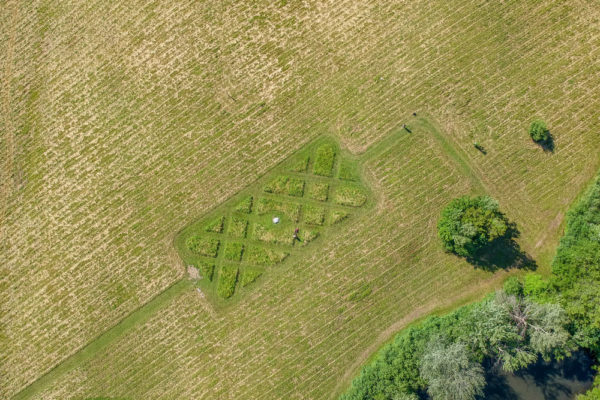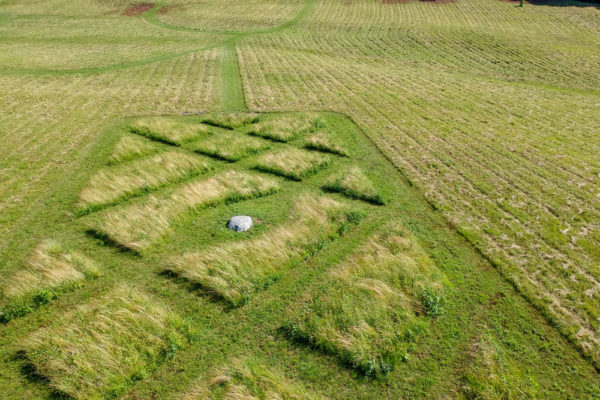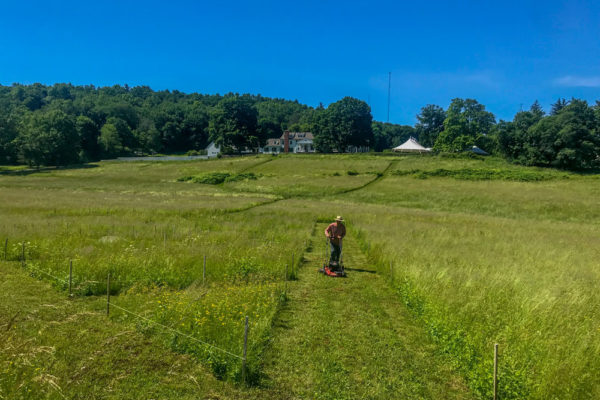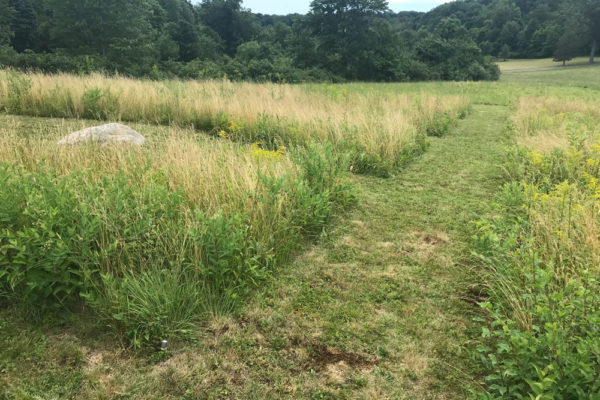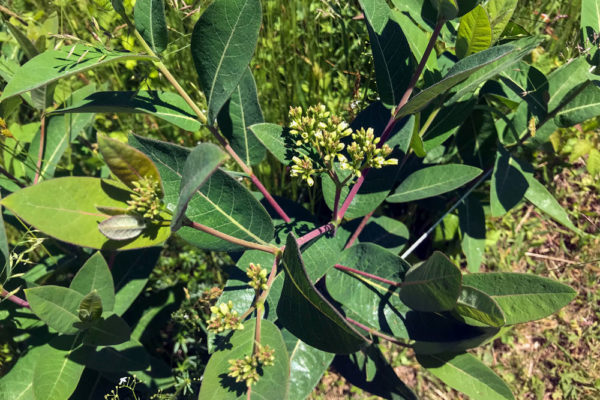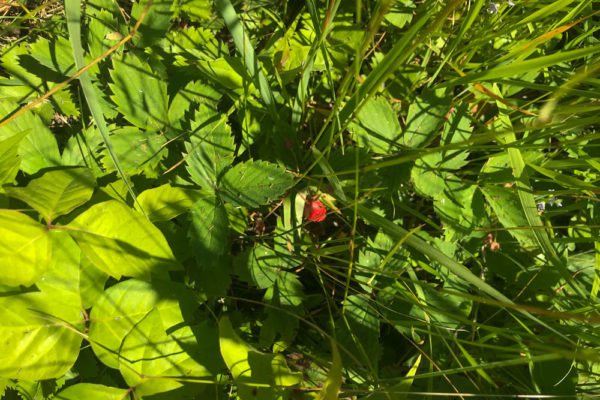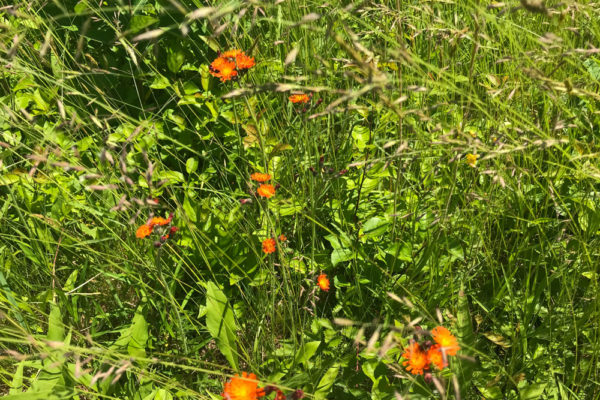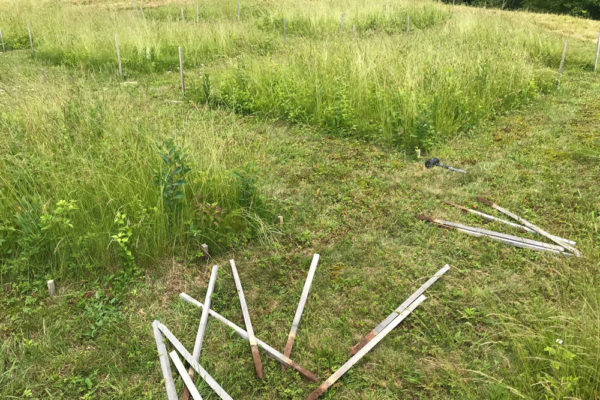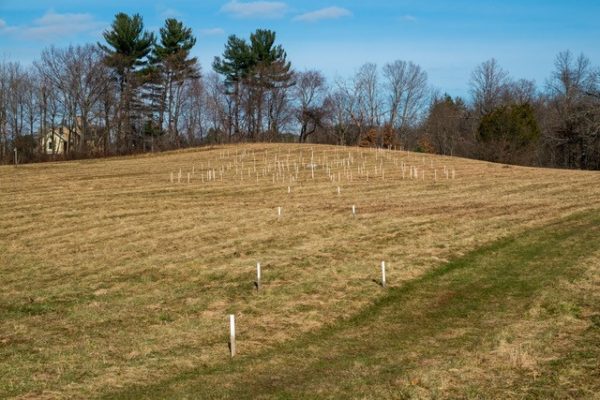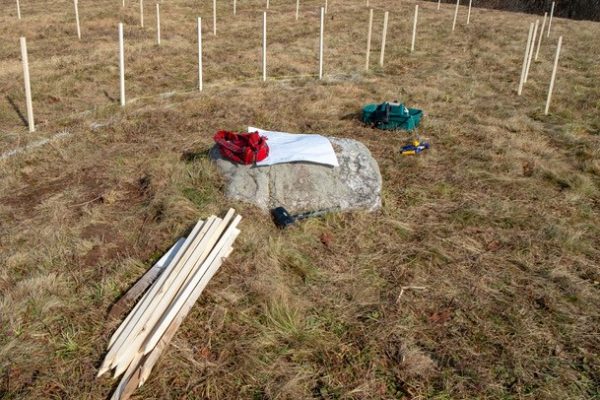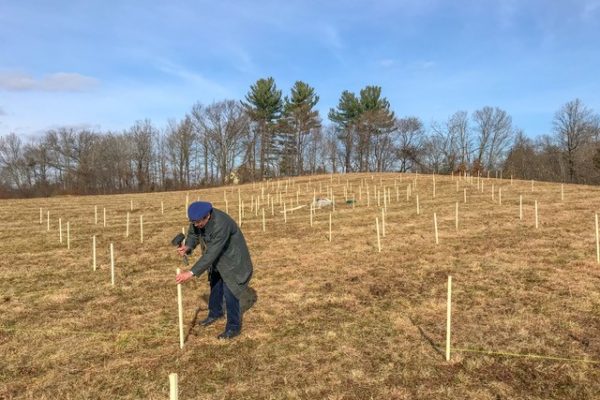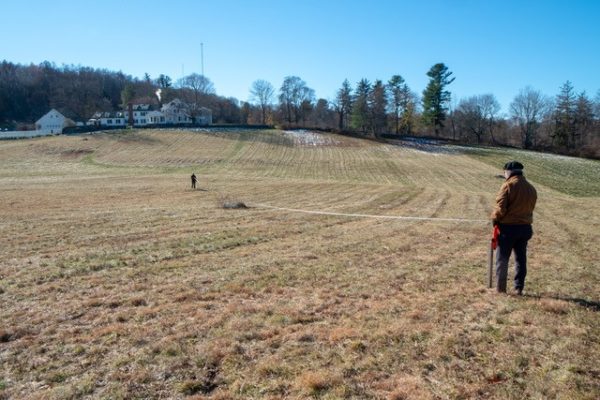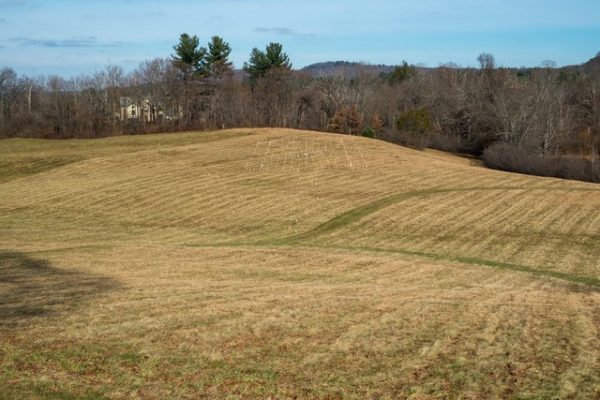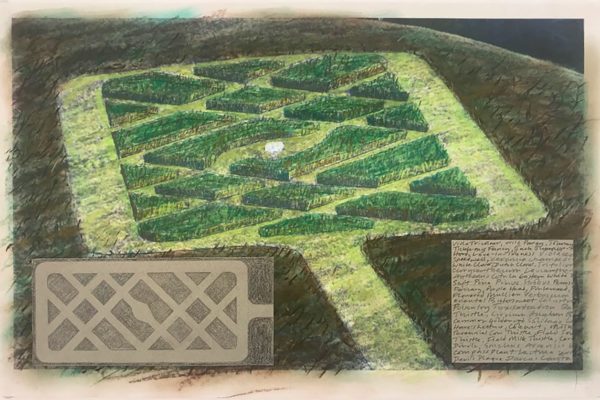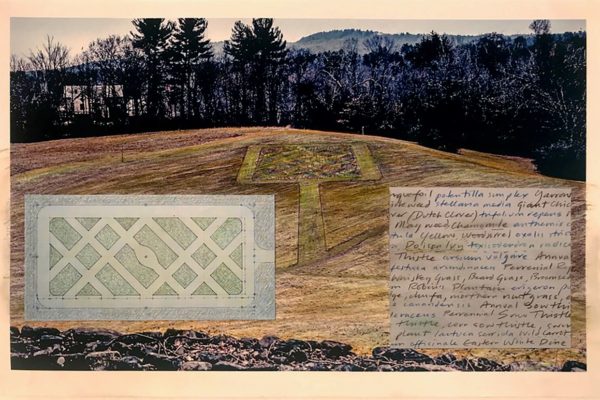July to December 2019
Photographs by Bob Chaplin unless otherwise noted.
A New Site-Specific Artwork at Hill-Stead
In the fall of 2018, landscape artist Bob Chaplin began the installation of A Natural Parterre on the grounds of Hill-Stead Museum. Through this unique, site-specific artwork, the artist hopes to initiate a dialogue between ‘nature’ and man’s involvement to try and ‘tame’ nature. The installation is situated in the large meadow below and to the north Hill-Stead’s historic 1901 Colonial Revival house. It can be viewed from the museum’s west lawn and as part of Hill-Stead’s established, mowed, walking-path system. The parterre is designed to be experienced up-close and visitors are encouraged to walk through it.
The concept of the formal garden dates back to medieval times with gardens designed by monasteries for medicinal and herbal plantings, and later on with European palaces, manor houses and private estates. The initial idea of the French parterre garden, with carefully designed plots and walkways, was to present an artistic pattern when seen from above. This installation will examine and carry on the tradition of the formal garden, but with a twist.
The geometric garden design of A Natural Parterre is approximately 136 feet by 64 feet with pathways currently defined by wooden stakes and twine. The outlined garden sections between the pathways will not be planted like a traditional parterre and will not be mowed. As the grass begins to grow this spring, only the defined pathways will be mowed, providing increasing contrast against the unmown areas of the installation. Plant species will naturally come and go in the unmown areas, aided by the wind, birds and seed-carrying mammals. New seeds deposited by nature will gradually add diversity to the parterre, offering a visual progression from annuals to perennials, to shrubs and trees. Once the mowed pattern is established, the stakes and twine currently visible will be removed.
It is imperative that I encourage the general public and local students to observe the processes of change within the project. The process of observation and documentation of the seasonal changes over time are fundamental to the experience and understanding of this project. It is an integral part of the art I create. I look at it as a slowly evolving, long-term performance.
— Bob Chaplin
The museum’s grounds are open to the public year-round at no charge, and free parking is also provided, offering numerous opportunities for no-cost public viewing and interaction with the project as it naturally evolves.
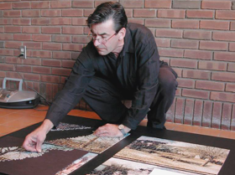 Bob Chaplin moved from England to the United States in 1986. He was an adjunct professor at UCONN/Storrs, and at the University of Hartford’s Hartford Art School, and has lectured at the Yale Center for British Art in New Haven. He was an Artist-in-Residence at the Visual Studies Workshop in Rochester, New York and Weir Farm in Wilton, Connecticut. As well as many printmaking awards, he received two Polaroid Corporation Bursaries and a Connecticut Commission of the Arts Bursary.
Bob Chaplin moved from England to the United States in 1986. He was an adjunct professor at UCONN/Storrs, and at the University of Hartford’s Hartford Art School, and has lectured at the Yale Center for British Art in New Haven. He was an Artist-in-Residence at the Visual Studies Workshop in Rochester, New York and Weir Farm in Wilton, Connecticut. As well as many printmaking awards, he received two Polaroid Corporation Bursaries and a Connecticut Commission of the Arts Bursary.
Chaplin’s work is represented in many collections throughout the world including The Tate Gallery, London; Art Institute of Chicago, U.S.A.; Stedlijk Museum, Holland; National Museum, Warsaw, Poland; Museum of Modern Art Library, New York; Whitney Museum of American Art Library, New York; Getty Research Institute Library, California; The British Museum, London; Victoria & Albert Museum, London; The Arts Council of Great Britain; The British Council; The National Gallery Library, Washington, D.C.; New York Public Library; Yale Center for British Art, New Haven; Museum of Contemporary Art, Skopje, Yugoslavia; Stavanger Faste Galleri Permanent Collection, Norway and Nordnorske Kunstnersenter, Lofoten, Norway.
- Chaplin’s recent works are garden installations set in the landscape at I-Park, an artist-in-residence facility in East Haddam, Connecticut. For further information about Bob’s work and garden art installations at I-Park, please visit http://www.i-park.org
- A recent catalog of Chaplin’s work with photos and descriptions of existing environmental art installations can be found at http://www.i-park.org/chaplin-catalogue
- You may also visit the artist’s website http://www.bobchaplin.com/bobchaplin/Homepage.html
